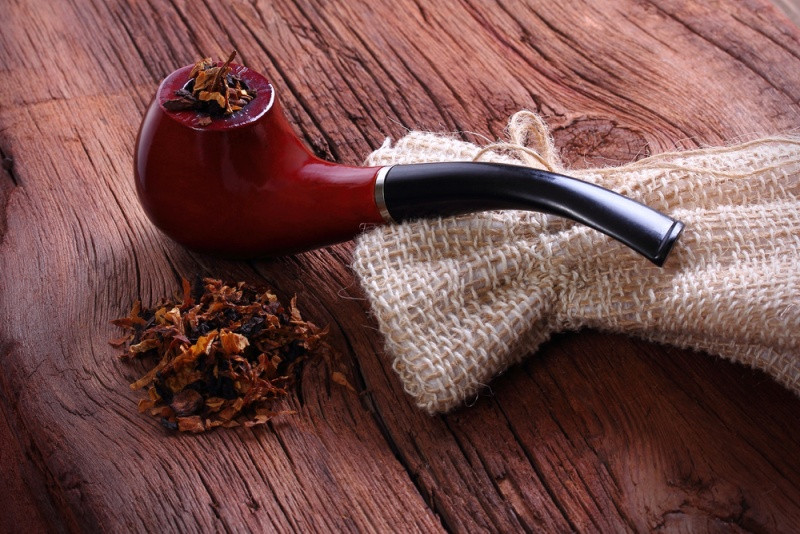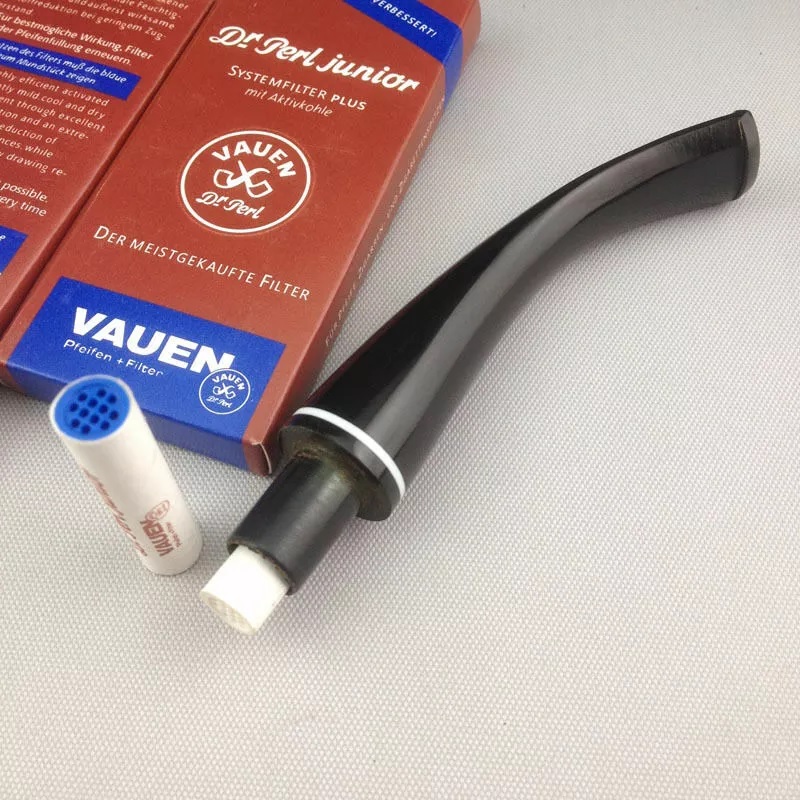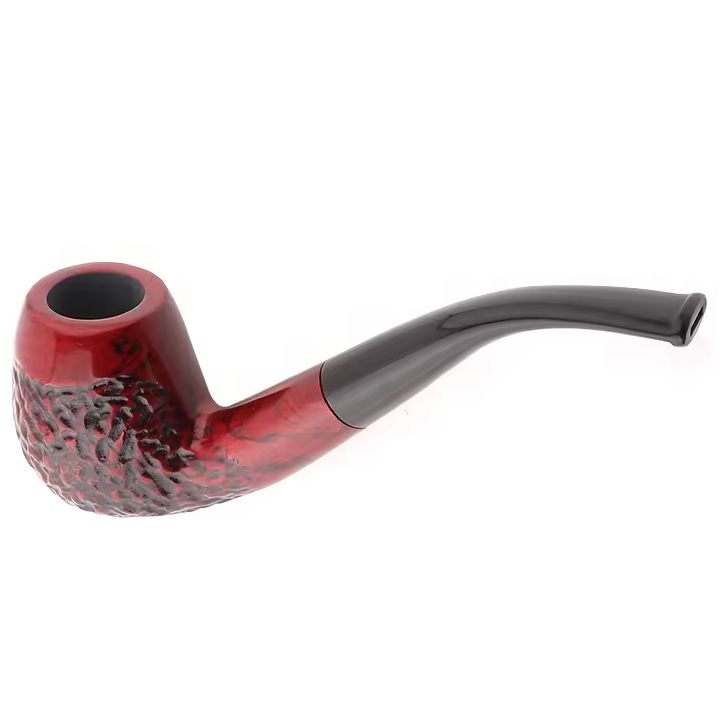Searching ...
Guide to the World of Pipes and Accessories
Introduction to the World of Pipes
Pipes have a long history and are synonymous with relaxation and comfort. For many smokers, it is not just a habit but a ritual associated with relaxation and enjoying the smoke from a pipe. Pipe smoking is a unique experience that requires some care and knowledge of accessories. If you want to immerse yourself in the world of pipes, it is important to understand their types, maintenance methods, and the accessories that will enhance this unique ritual.
Most Popular Pipes
Pipes are made from various materials and come in different shapes. Each material and shape affects the burning process and the taste of the smoke. The most popular types include:
- Briar Pipes – made from briarwood, these pipes are resistant to high temperatures and have a long lifespan. This material is one of the most commonly used for high-quality pipes. Briarwood absorbs moisture well, contributing to a smoother and cleaner smoking experience.
- Meerschaum Pipes – made from meerschaum (a mineral also known as "sea foam"), these pipes are known for their smooth surface and excellent moisture absorption. Over time, they develop a beautiful patina that gives them a unique appearance.
- Corn Cob Pipes – lightweight, affordable, and popular among beginners. They provide a mild taste and are easy to maintain. Their lifespan is shorter than wooden pipes, but they are ideal for experimentation.
- Metal and Glass Pipes – modern variations that are popular for their ease of maintenance and minimalist design. Glass pipes do not affect the taste of the smoke and allow the smoker to see the tobacco burning process.
- Ceramic Pipes – often decorated and aesthetically appealing, but also fragile and less resistant to impact. Due to their non-porous structure, they do not absorb moisture or odors, ensuring a consistent taste.
- Foam Pipes – made from lightweight materials that effectively filter impurities and are suitable for beginners. They are available in various colors and designs.
- Wooden Pipes – available in different types of wood, such as pear, maple, or walnut. Each type of wood has its own specific aroma and taste, which can influence the overall smoking experience.
- Epoxy Pipes – a modern alternative that combines aesthetics and durability. Epoxy pipes are sturdy, easy to maintain, and come in various colors, making them an attractive choice for smokers looking for a unique design.
- Clay Pipes – historical pipes that provide a pure tobacco taste.
Shape and Type of Pipes
Traditional Tobacco Pipes
- Straight Pipe (Billiard) – a classic pipe with a straight stem and a cylindrical bowl.
- Bent Pipe – has a curved stem, making it more comfortable to hold and smoke.
- Bulldog – features a slightly flattened bowl and often an angular shank.
- Churchwarden – a pipe with an extra-long stem, allowing for cooler smoke.
- Calabash – a traditional pipe made from gourd or wood, often with a ceramic insert.
- Dublin – a slightly flared bowl towards the top, allowing for better tobacco burning.
- Poker – a straight pipe with a flat bottom, so it can stand upright on its own.
- Meerschaum – a pipe made from a special mineral (meerschaum) that changes color over time.
- Corn Cob Pipe – a simple pipe made from a corn cob, popular for its affordability and lightness.
- Hybrid Shapes – combining features of different styles, such as Half-Bent pipes.
Electronic Pipes (E-Pipes)
Modern versions of pipes that use e-liquid instead of tobacco. They may have the classic wooden pipe look or a futuristic design. Some are designed for nicotine cartridges, while others are intended for herbal extracts.
Historical and Ritual Pipes
- Peace Pipe – used by Native Americans in ceremonies and agreements.
- Opium Pipe – a specially shaped pipe used for smoking opium, historically popular in Asia.
- Shamanic Pipe – a ritual pipe used for spiritual purposes and meditation.
Symbolic Pipes
- Heraldic Pipes – used in family crests, often as a symbol of wisdom or craftsmanship.
- René Magritte's Famous Pipe ("Ceci n'est pas une pipe") – a philosophical painting challenging reality.
- Sherlock's Pipe (Calabash Pipe)
By Region and Culture
- English Pipes – traditional briar pipes with an elegant design.
- Danish Pipes – modern and artistic pieces from renowned manufacturers.
- Turkish Meerschaum Pipes – intricately carved from meerschaum with rich decorations.
- Native American Peace Pipes – ritual pipes used in ceremonies and agreements.
- African Calabash Pipes – made from gourds, often with a ceramic insert.
By Stem Length
- Short Pipes (Nosewarmer Pipes) – compact pipes, ideal for discreet smoking.
- Standard Pipes – most classic pipes have a medium-length stem.
- Long Pipes (Churchwarden Pipes) – very long pipes (20+ cm), providing cooler smoke and an elegant appearance.

Essential Accessories
If you want to truly enjoy your pipe, you should have the right accessories to ensure comfort and proper maintenance:
- Pipe Lighter or Tamper – special pipe lighters ensure even burning, while a tamper helps control tobacco combustion and prevents it from burning too quickly.
- Cleaning Tools – brushes and pipe cleaners are essential for removing deposits and maintaining your pipe in good condition. Regular cleaning prevents the buildup of impurities that could affect the taste of tobacco.
- Pipe Stand – helps safely store your pipe, preventing damage. Stands can be simple wooden or metal, or decorative pieces for displaying your collection.
- Filters and Inserts – reduce the amount of tar and moisture, contributing to a better smoking experience. Replaceable filters ensure cleaner smoke and protect your lungs from harmful substances.
- Pipe Tool – includes various tools for handling tobacco and pipe maintenance, such as special spatulas for emptying the bowl.
- Pipe Screen – helps reduce residue buildup and improves airflow, ensuring even tobacco burning.
- Reinforcement and Cap – maintain the stability of the pipe and prevent unintended disassembly or damage.
- Protective Pipe Mouthpiece – extends the lifespan of the mouthpiece and ensures comfortable smoking without unpleasant sensations in the mouth.
- Pipe Ashtray Cap – used for safely placing and extinguishing the pipe without the risk of smoldering embers.
- Tobacco Jar – a practical container for storing tobacco, preventing it from drying out and preserving its original aroma.
- Pipe Ashtray – a special ashtray with a metal grid or deep bowl, designed for disposing of tobacco remnants and ash.
- Tobacco Humidifier – small ceramic or silicone discs that help maintain the correct humidity level in tobacco and prevent it from drying out.
- Travel Pipe Case – a practical case for safely carrying your pipe, tobacco, and accessories.
- Aromatic Stones or Pearls – help absorb excess moisture in the pipe and reduce unwanted odors.
How to Properly Care for Your Pipe
A pipe is not just a smoking tool but also a personal item that requires regular maintenance. Proper care extends its lifespan, enhances the smoking experience, and preserves its aesthetic appearance. If you want your pipe to serve you for many years, follow these basic rules:
1. Cleaning After Each Use
After each use, it is important to remove ash and clean the pipe chamber. Follow these steps:
- After smoking, allow the pipe to cool down for a while to prevent wood damage.
- Gently tap out the ash into an ashtray or carefully scrape it out using a tamper or pipe knife.
- Clean the airway and mouthpiece with a pipe cleaner to remove moisture and tar residue.
2. Regular Maintenance of the Airway and Mouthpiece
To maintain the pleasant taste of tobacco and ensure smooth airflow, it is necessary to regularly clean the airway and mouthpiece:
- Use pipe cleaners – preferably slightly moistened with a special cleaning liquid or alcohol (such as whiskey) to dissolve deposits.
- If you have an acrylic mouthpiece, you can occasionally rinse it under lukewarm water. However, avoid water for ebonite mouthpieces to prevent damage.
3. Proper Use and Resting of the Pipe
- It is not recommended to smoke the same pipe multiple times a day. The wood needs time to dry and regenerate to prevent excessive moisture absorption.
- If you smoke regularly, it is advisable to have multiple pipes and rotate them.
- Do not force the pipe to extinguish quickly – instead, let it burn out naturally.
4. Deep Cleaning Occasionally
- Use a special cleaning liquid or alcohol to remove deeply embedded tar and residues.
- Gently wipe the inside of the chamber with a damp cleaning swab or a piece of cloth.
- If a thick layer of carbonization forms in the chamber, you can carefully scrape it off with a pipe knife.
5. Filter Replacement
If you use a pipe with a filter, remember to replace it regularly:
- Paper filters should be changed after each smoking session, while carbon and balsa filters approximately every 2-3 uses.
- If you use a pipe without a filter, it is essential to clean the airway even more thoroughly.

6. Proper Pipe Storage
- Store your pipe in a dry and well-ventilated place. Excess moisture can lead to mold growth.
- Avoid exposing it to direct sunlight or extreme temperatures to prevent the wood from drying out or cracking.
- Ideally, store the pipe in a pipe stand, allowing the airway to dry properly.

Conclusion
Pipe smoking is more than just a habit – it is an art and a form of relaxation. Choosing the right pipe and accessories allows you to fully enjoy this experience. If you are a beginner, we recommend experimenting with different types of pipes and materials to find what suits you best. A pipe is not just an object; it is a world of experiences, aromas, and traditions. For many, it is a moment of peace, a ritual that brings relaxation and a space for reflection. It is not about instant gratification but about mastering the art of slowing down and fully savoring the moment. Whether you are an experienced pipe smoker or a novice, a pipe can be a way to escape the